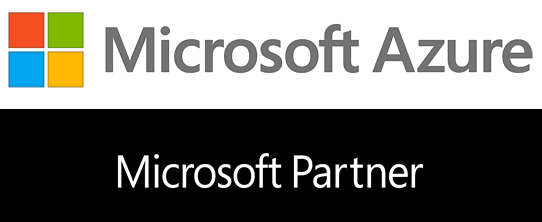- PIPELINEFX CUSTOMER SPOTLIGHT : STUDIO Z -
Rendering Sucks….But It Doesn’t Have To…
StudioZ, owned by Zimmerman Advertising, (who is owned by Omnicom in NY), has been considered the "new wave" of how post production studios work. They are an advertising agency, with a full creative production studio. With less than fifty employees, they create thousands of television spots and hundreds of radio spots per month that are funneled from the agency.
StudioZ has expanded their current Qube! render farm with an additional 60 nodes (March 2015), however, it seems apparent that Ryan Salazar, Broadcast engineer at StudioZ and StudioZ / Zimmerman Advertising understood the benefits of a render farm and a render farm manager as much as three years ago!
In 2012, Pixar sat down with Ryan Salazar. Here's some of that interview:
When you hear the word “farm,” you either think of “Old MacDonald” or a bunch of cows or fields of wheat, etc. “Render farms” evoke the same type of vision — albeit one of many computers linked together with yards and yards of cabling, rather than animals grouped together in a barnyard. But the concept is similar. Many servers joined together for one purpose: to render — or to take an artist’s product and transform it into a complex animation for viewing.
It isn’t because you can’t render on single machines — it is definitely possible. However, when you consider that rendering bits or parts of an animation can take into the millions of hours to render, the “one machine” possibility is no longer an option.
Teaming clusters of systems together to generate frames of videos is an amazing time-saver, especially when there are heavy scenes that need lots of processing power.A great example of what a render farm can do compared to one desktop machine: our company creates a decent amount of animation via Autodesk Maya and Maxon Cinema4D. I (originally) created a render farm with 20 nodes (BOXX Technologies server blades) along with a render controller (another server).
Contemplate this: a 192 frame national TV commercial job that we rendered (about 6 seconds of animation) took 4.5 hours (or about 1.5 minutes per frame) on the animator’s computer (a MAC Dual-Hexa core or 12-cores, with 24G RAM). That same project rendered on our farm in 8 minutes (or about 2.5 seconds per frame)! Yes… the time saved is clear — considering 30fps with a standard 22min TV show is 39,600 frames, at 1.5 min/frame = 990 hours (or over a month running 24 hrs/day) versus 2.5 sec/frame = 27.5 hours.
“Blinn’s law which states that no matter how much computing resource is available, the overall rendering time of a frame will always remain constant, has proved remarkably resilient to date, says Chris Ford, RenderMan Business Director, Pixar Animation Studios, in a discussion I had with him. “Though CPU capacity continues to grow rapidly, and new infrastructure such as the cloud and GPU’s may increase throughput and economy, it is equally true that ongoing developments in cinematic image rendering such as ray-traced global illumination combined with the always increasing artistic demands of the Director will continue to demand whatever resources are available.”
We have a FlipFactory-Array running renders for over 10,000 files that are processed monthly. This cluster of systems is a render farm which processes .MOV files and creates .M4V, .FLV and .mpg media.As we all know, a render doesn’t mean your job is complete. It just means you’re ready to pop it into the timeline, make some more magic and send to your producer or client for approval. If they have a revision… then you have ANOTHER render to do. One of our artists has a poster on his wall, exclaiming: “Rendering Sucks!” Anyway, the farm speeds everything up thus allowing faster approvals and in the end, getting the final job quicker, too.
“The importance of the artist’s time and what that is worth in regard to one’s creative business; dedicated rendering allows you to off-load your designs saving valuable time,” explains John Vondrak, Copy Writer/Video Producer at BOXX Technologies. “For many artists (especially indie operators), the limitations of space, sufficient electrical power, and finances makes a product like renderPRO an ideal choice; an artist can build a very formidable render farm using renderPRO modules.”
“BOXX responds to popular demand for a personal render option (the Render PRO) for freelancers and entrepreneurs that don’t have server closets,” says Gerrie Schwartz, Performance Specialist at BOXX Technologies.
Motion Picture and Post Production Facilities (even broadcast!) use render farms on a daily basis. In my current situation, our post facility has several render farms:
Our animation render farm uses hardware from BOXX Technologies called, “renderBOXX Pro.” That hardware has PipelineFX’s Qube! running.
Qube is a great render manager which runs all of our 80 nodes (960 cores!). The animation work we create is generated from Maxon’s Cinema4D and Autodesk’s Maya..." says Ryan Salazar, Broadcast Engineer, StudioZ.
Although Cinema4D doesn’t seem as high-end as Maya, professionals routinely use it because it feels easier and less intimidating. Maxon produces a product called “NetRender” which is their own rendering engine — one computer running the NetRender server suite can then access other computers running the NetRender Client application — cross platform — over the network, making the other computers render nodes within minutes! Naturally, Autodesk has a similar set-up for its Maya software called “Mental Ray.” Utilizing parallel network rendering, mental ray for Maya is placed on all the master machines and mental ray standalone is placed on the subservient or “slave” machines, creating a fully-networked rendering environment capable of some powerful workloads.
Render managers distribute workload amongst many machines. The render controller (usually referred to as the “root controller,” manages projects that are submitted to it via, for example, PiplineFX’s Qube! product.
Qube! is an industry-leading render manager utilized by the motion picture & broadcast industries and also government organizations.
Qube! (and many other render management systems) handle split-frame rendering — it can divide a single frame into multiple pieces, giving each piece to different computers, rendering them, then stitching the pieces back together into a final rendered frame for “distributed rendering” in order to speed things up.
To read original published article, please visit CreativeCow.net













